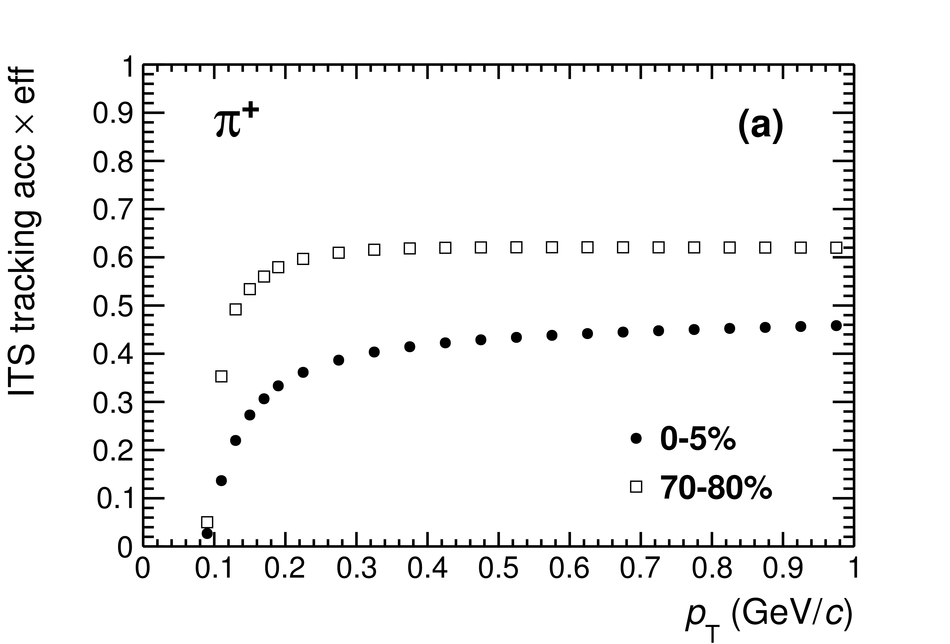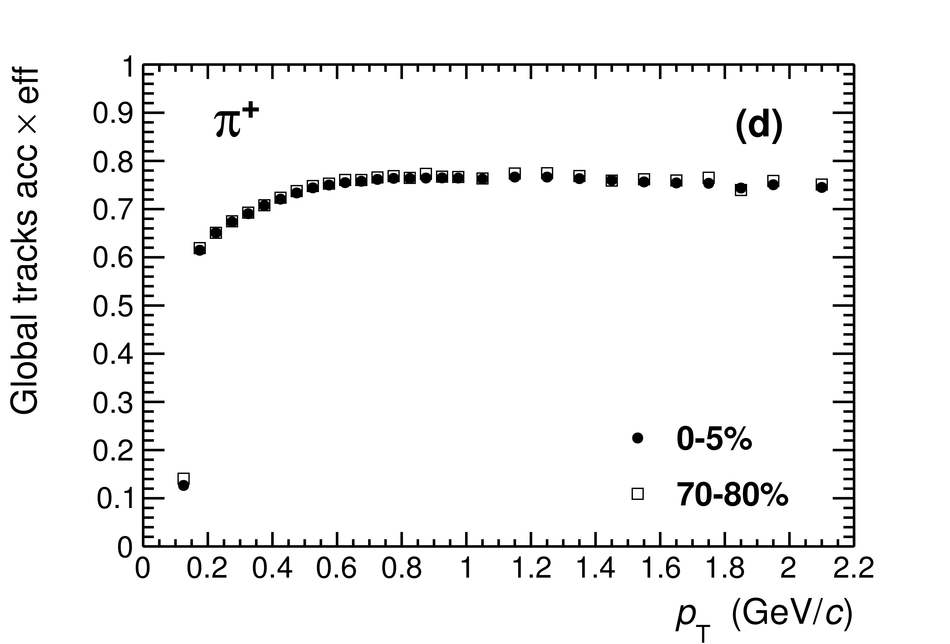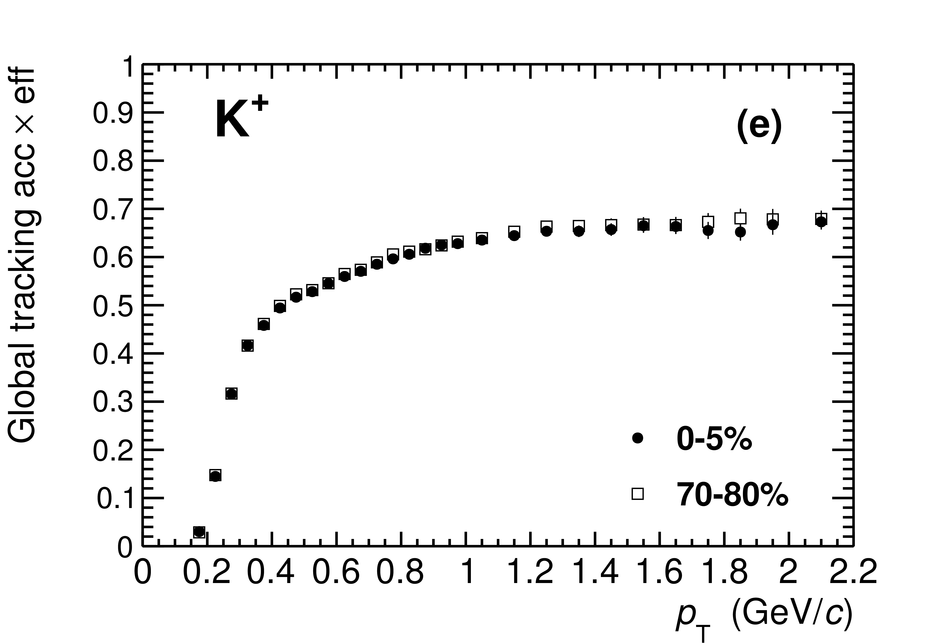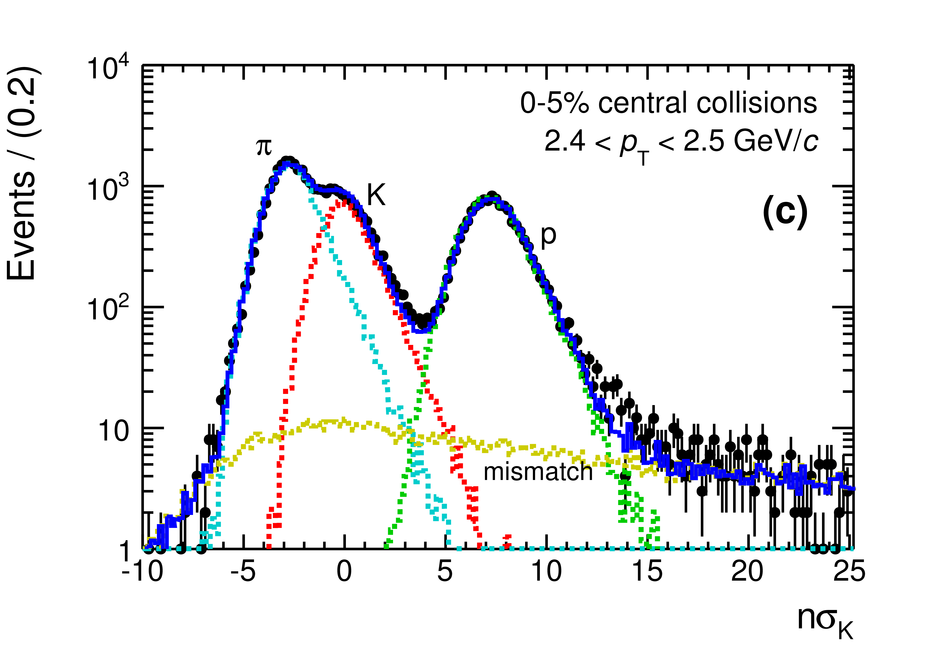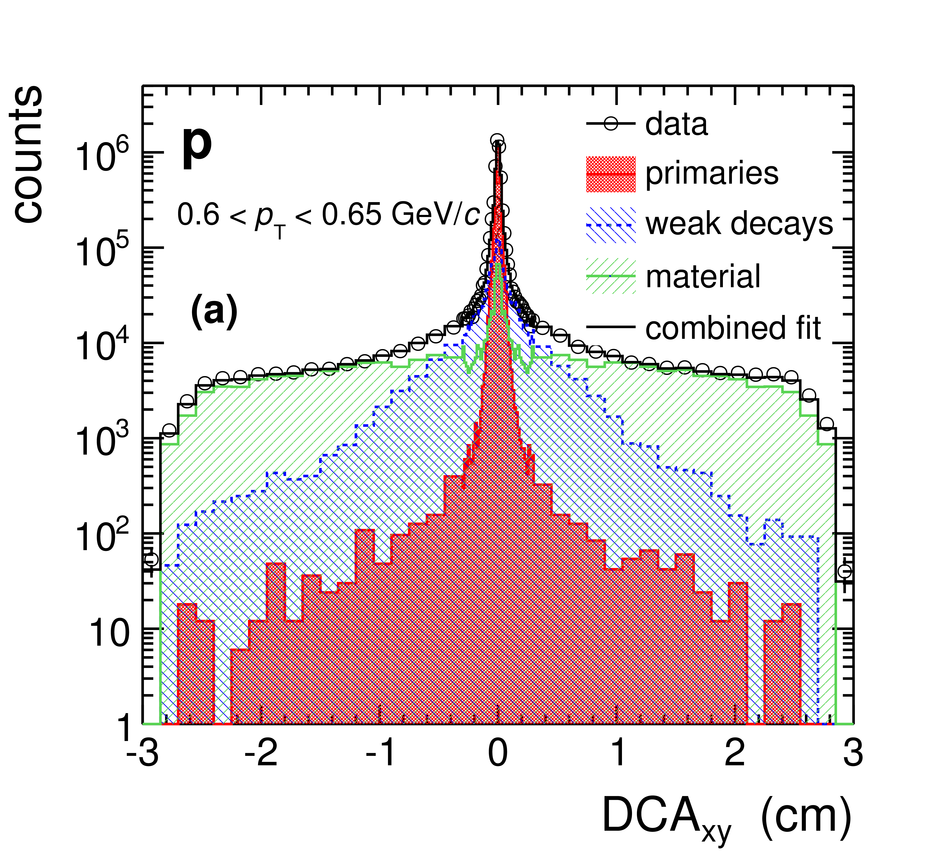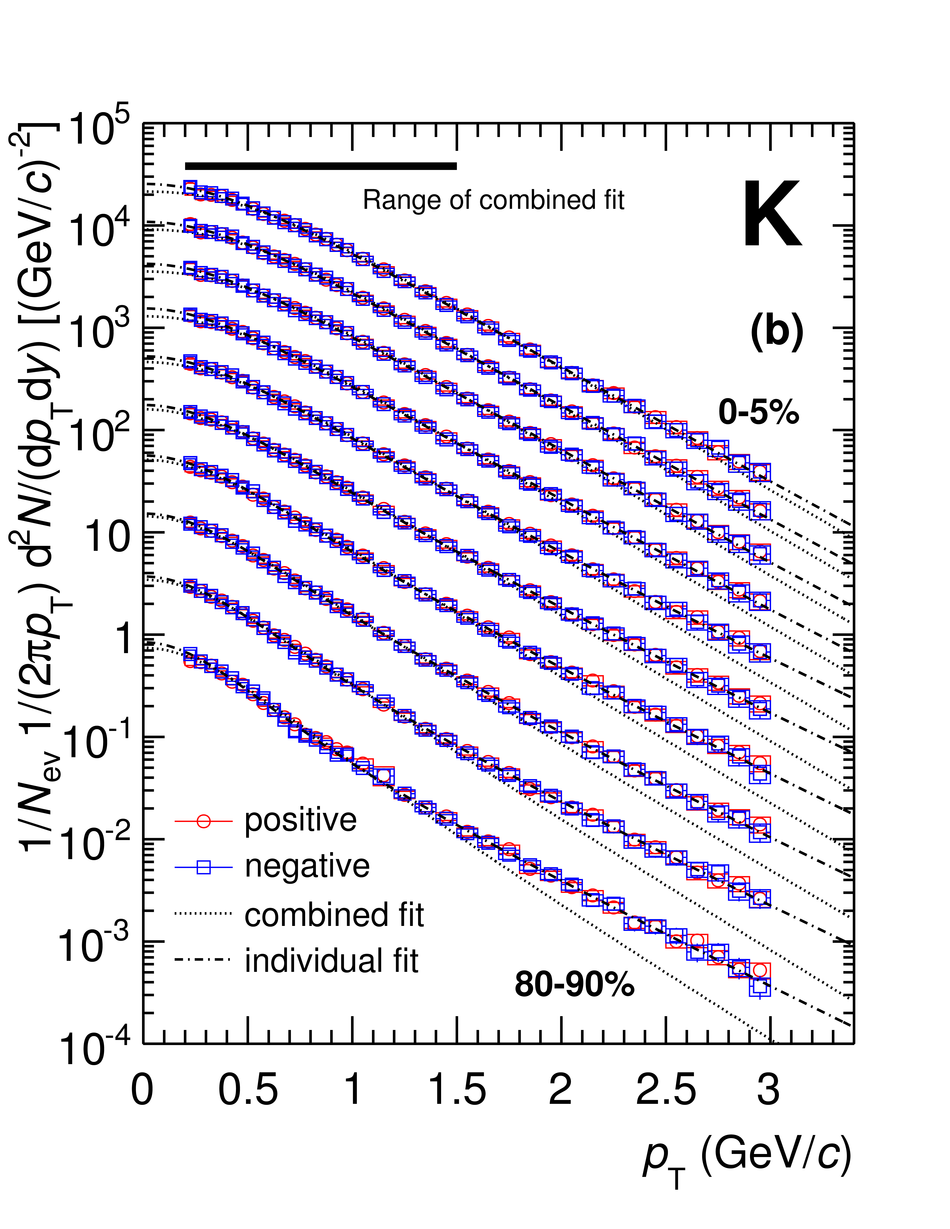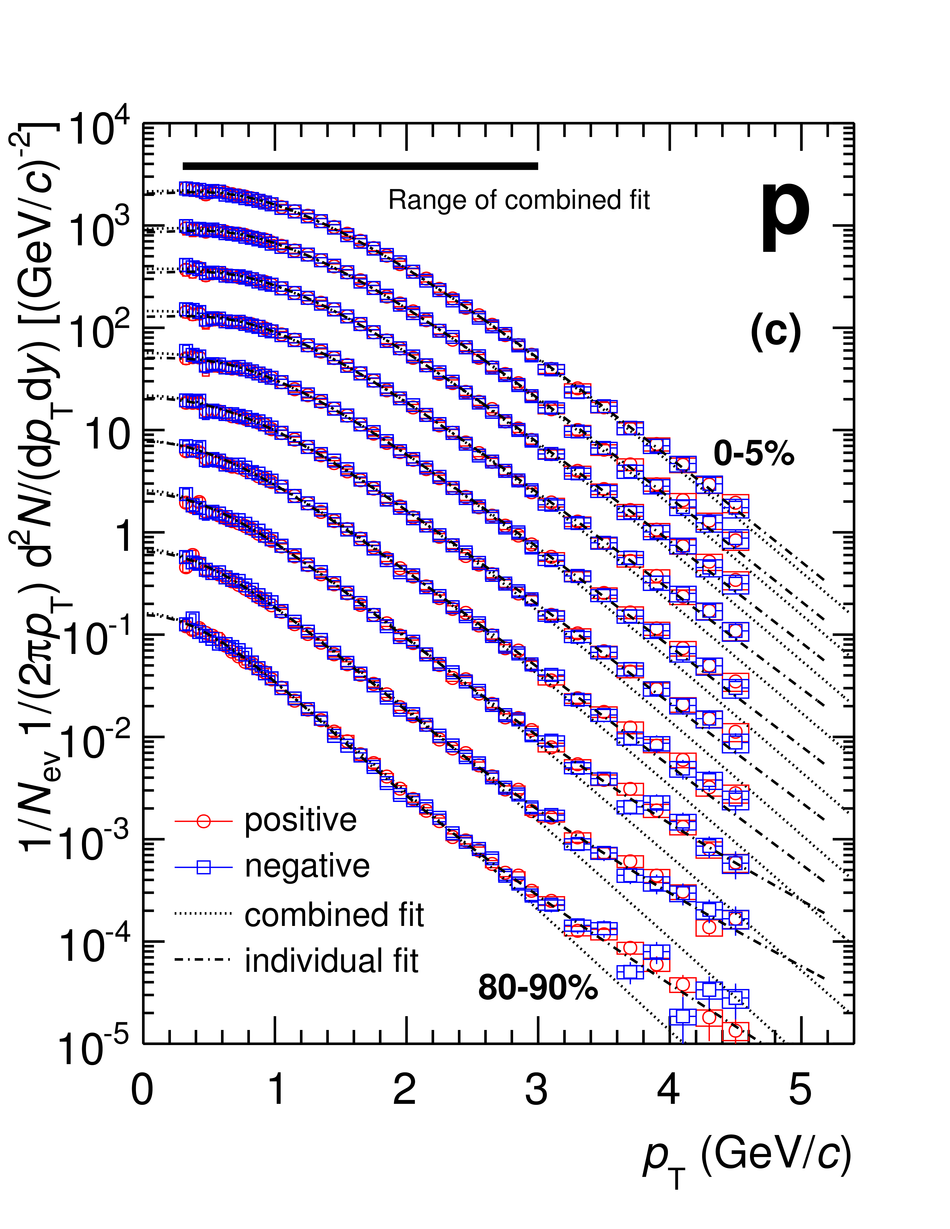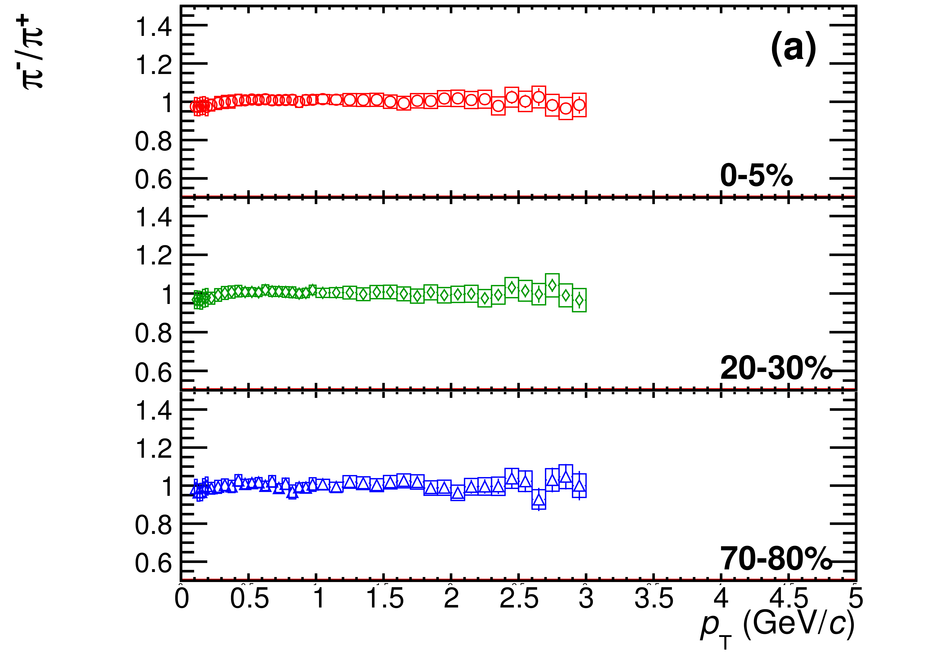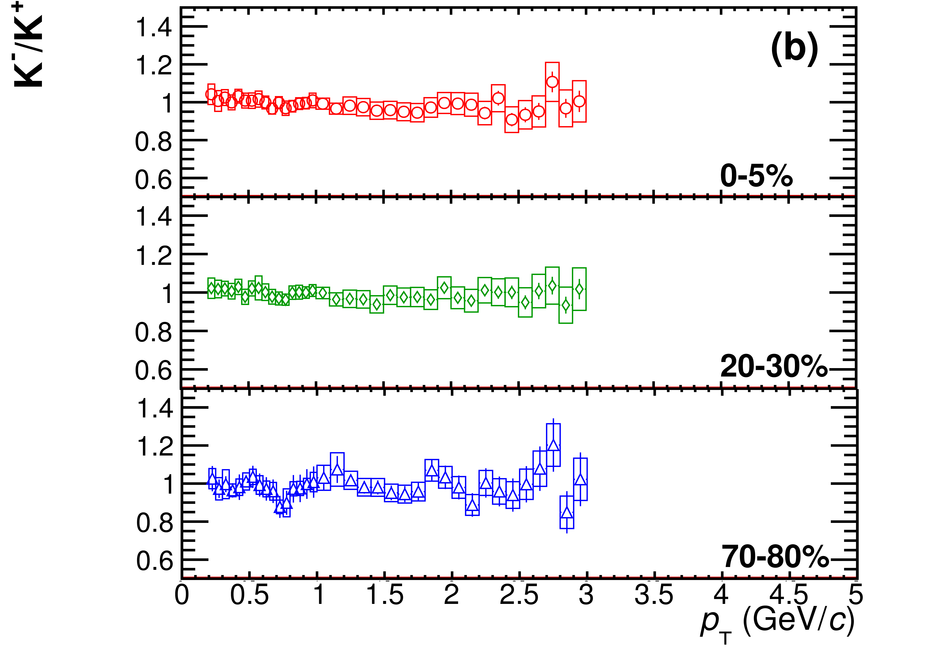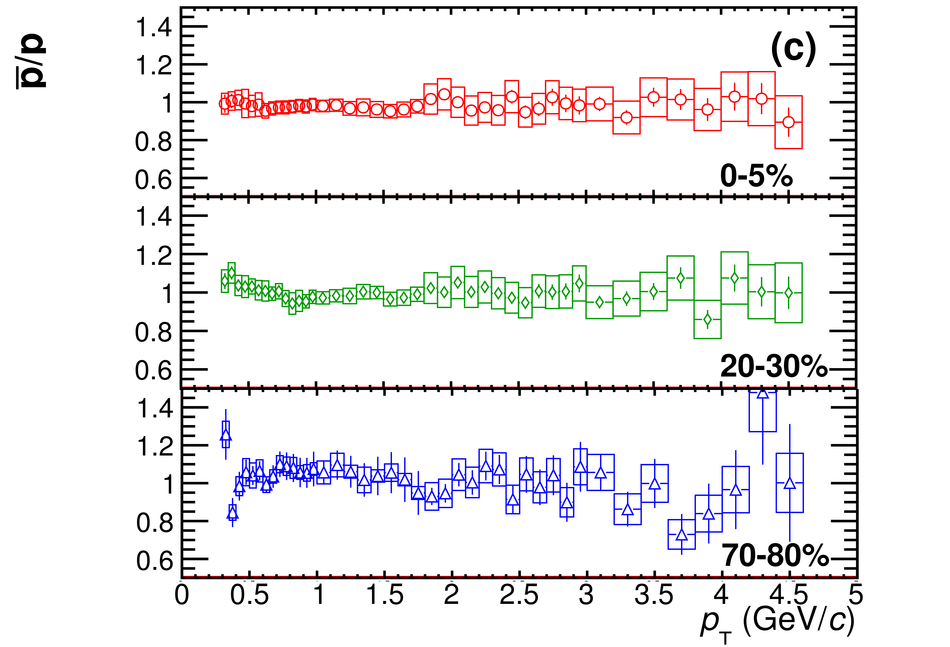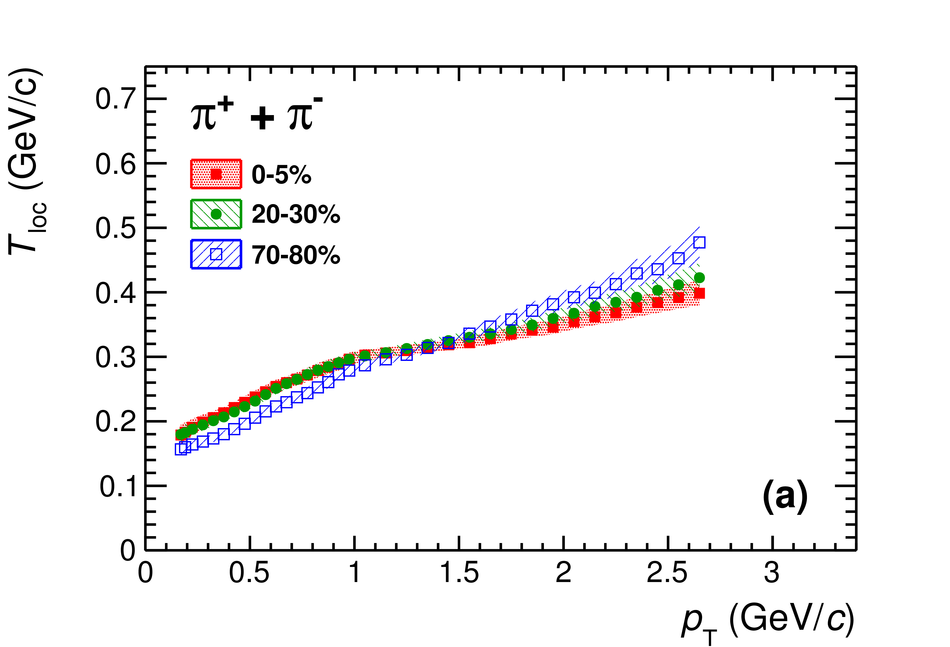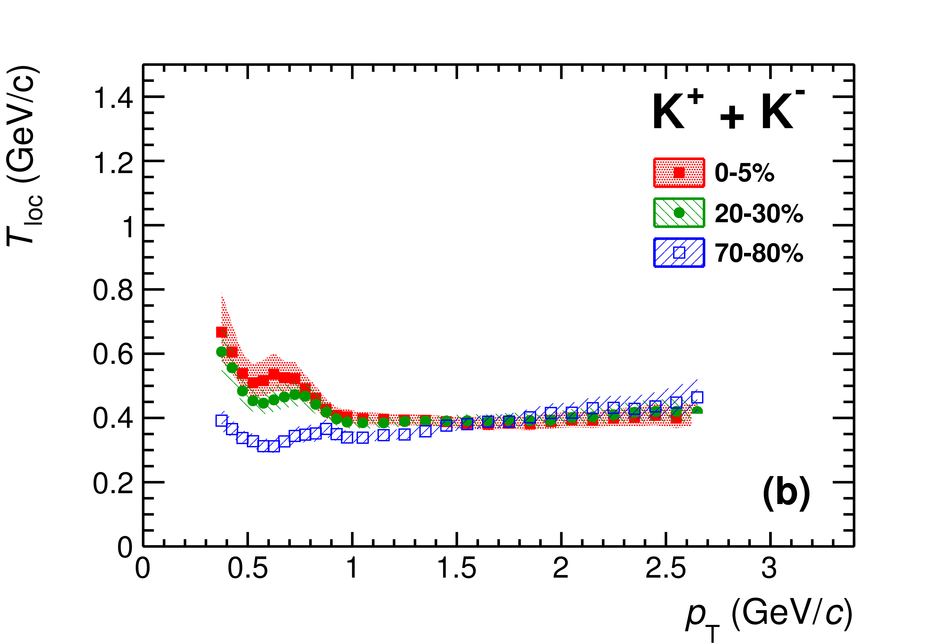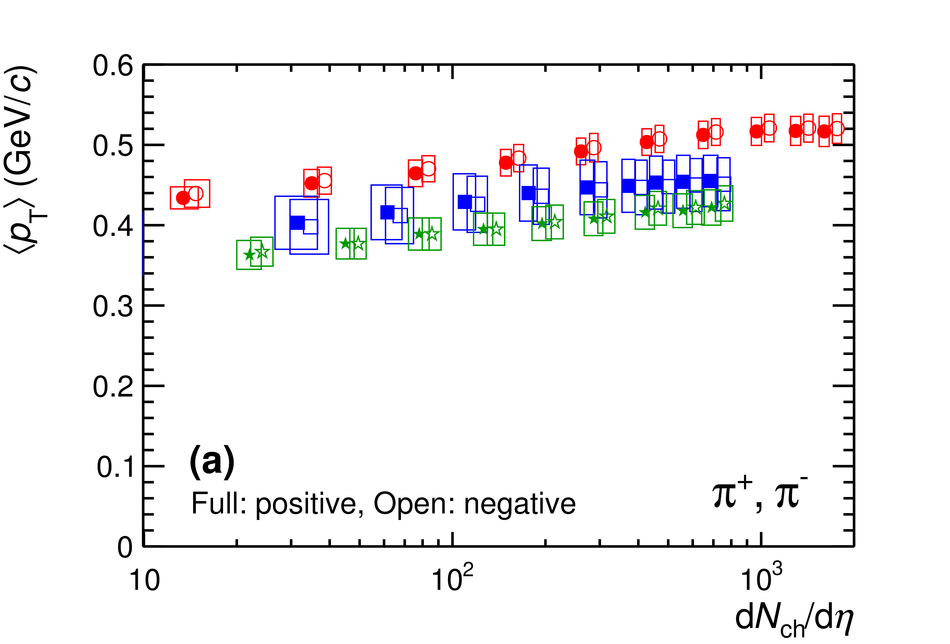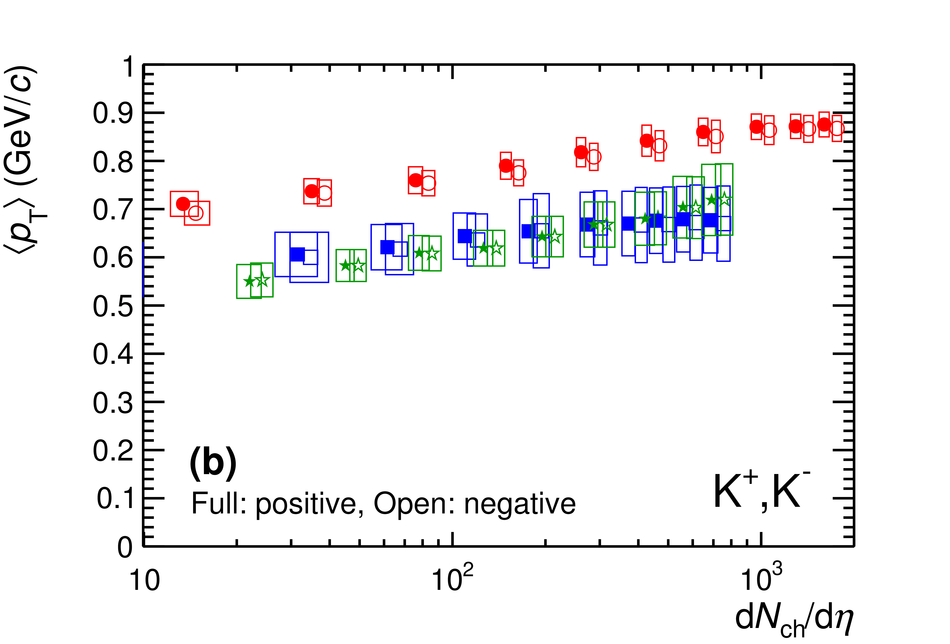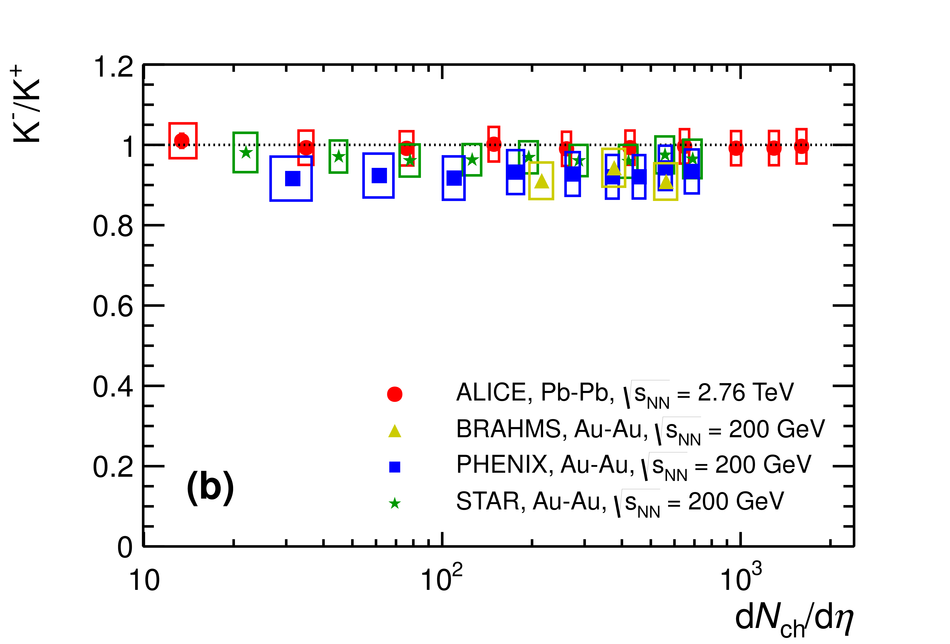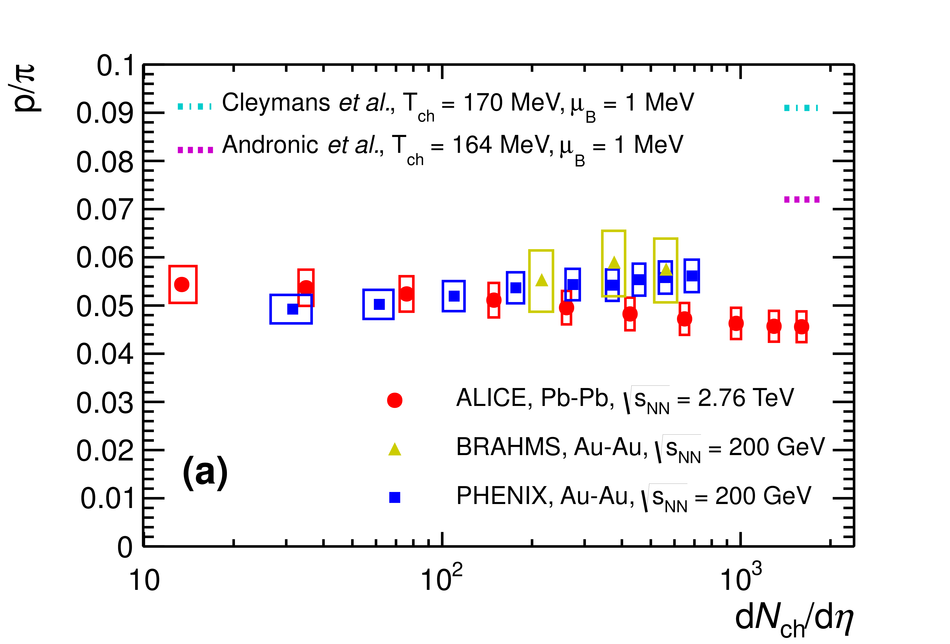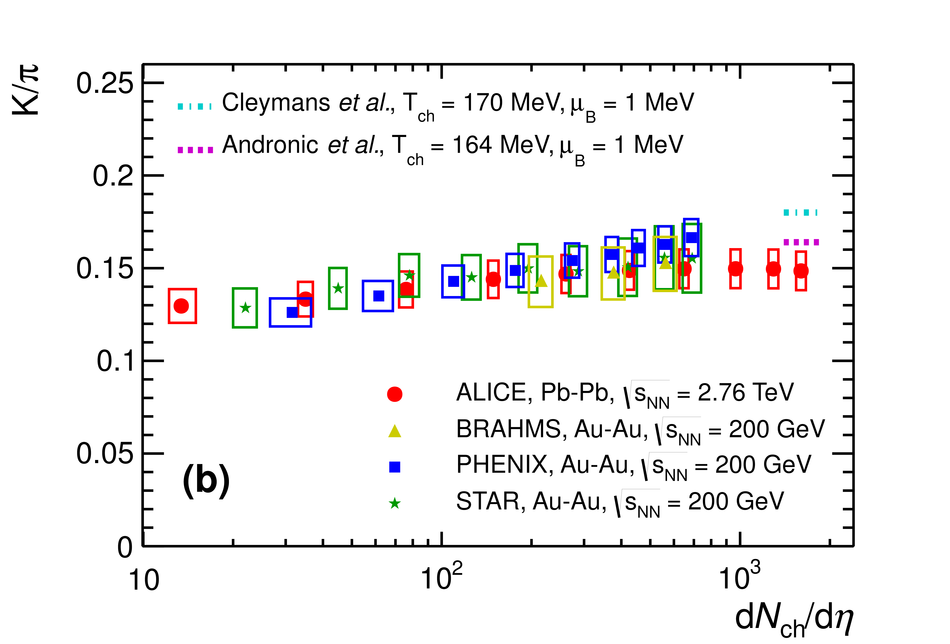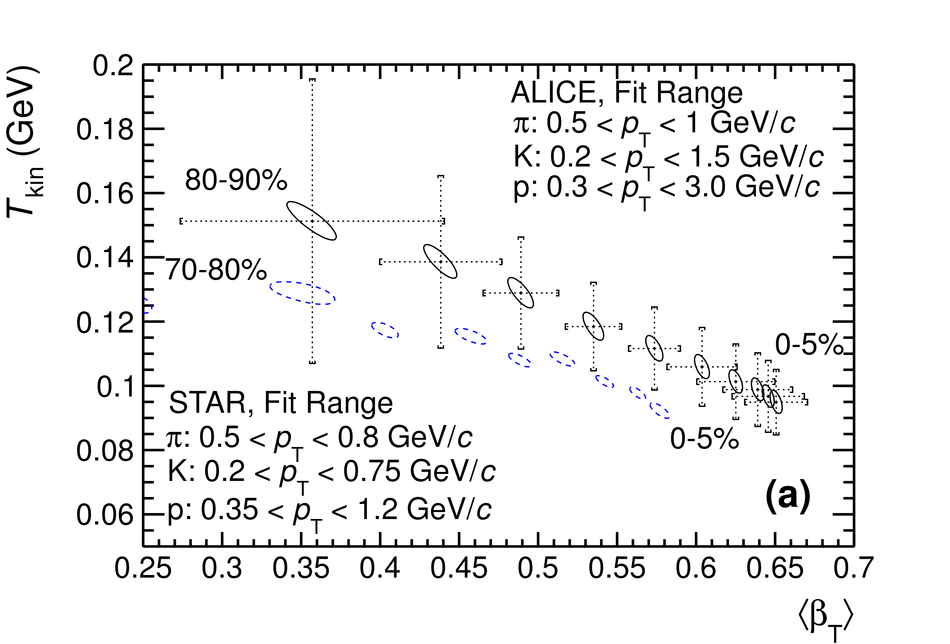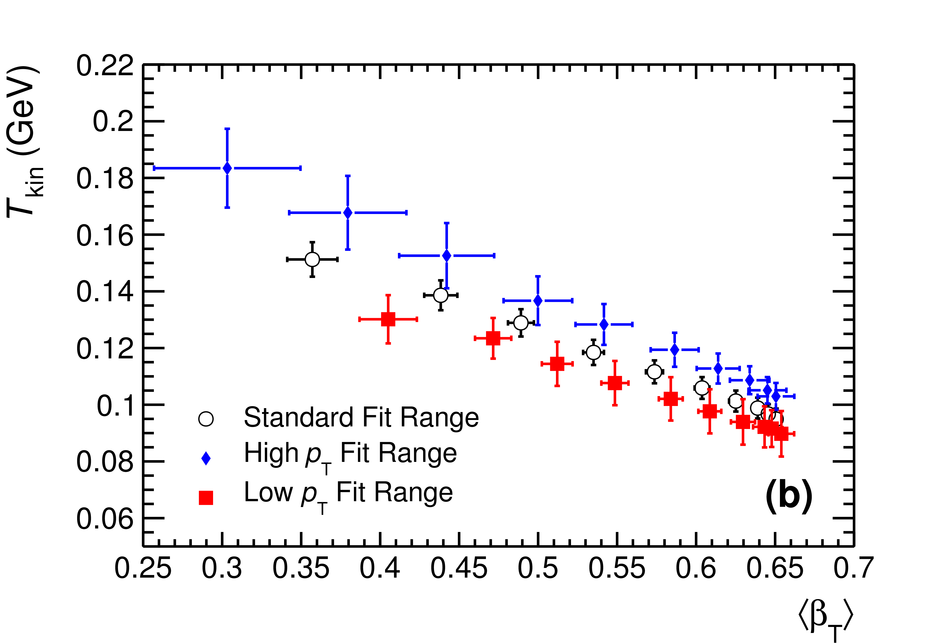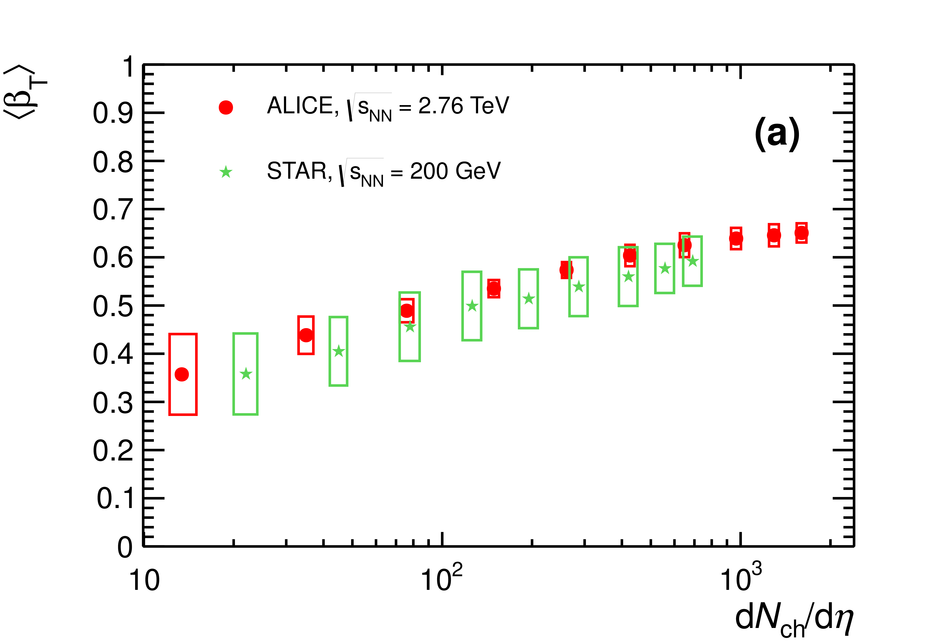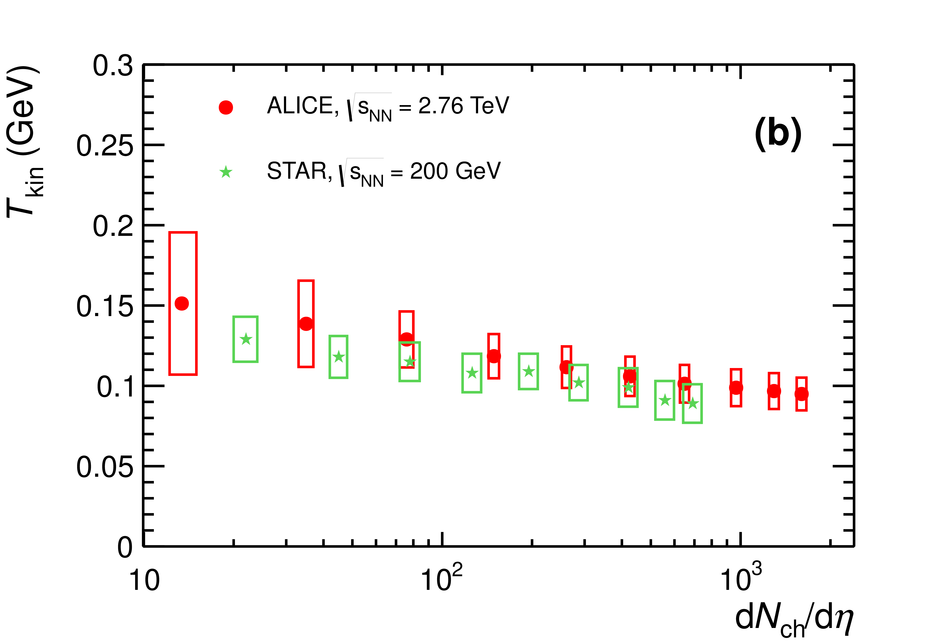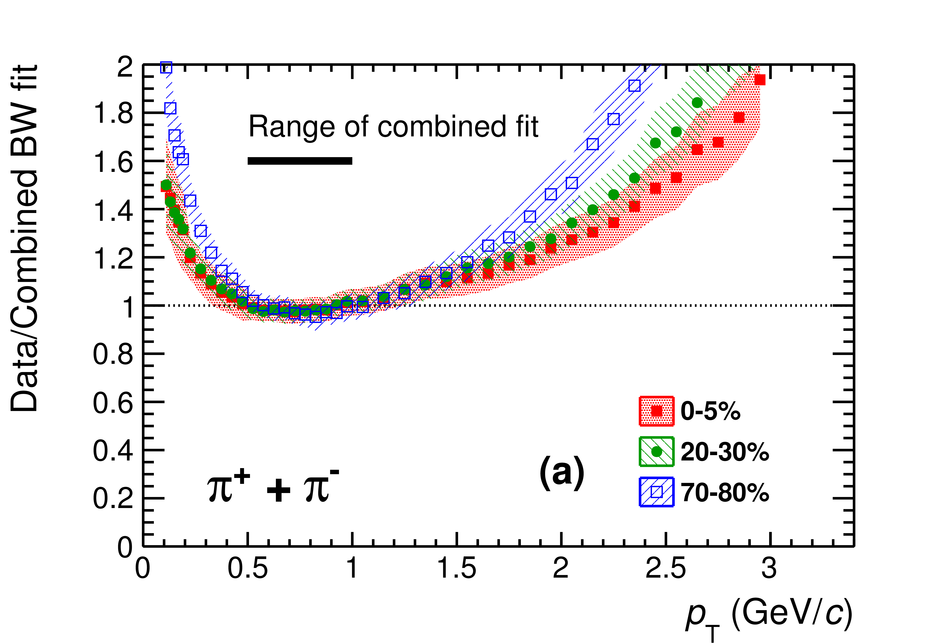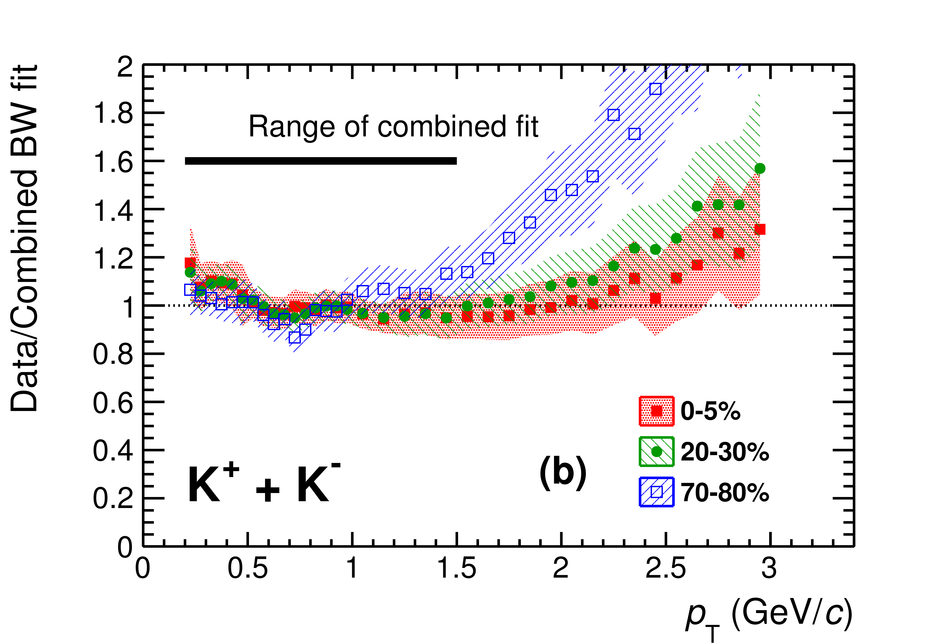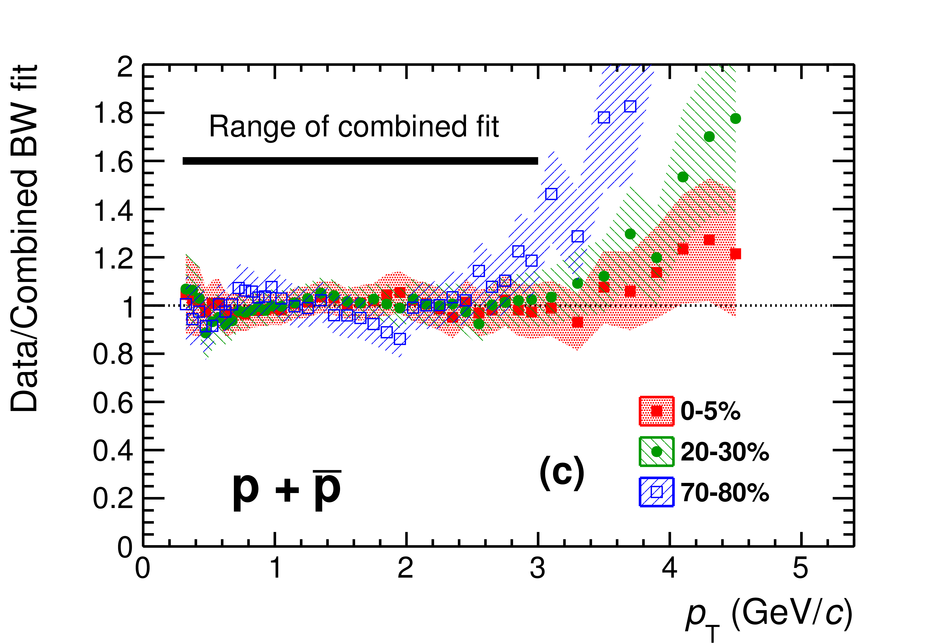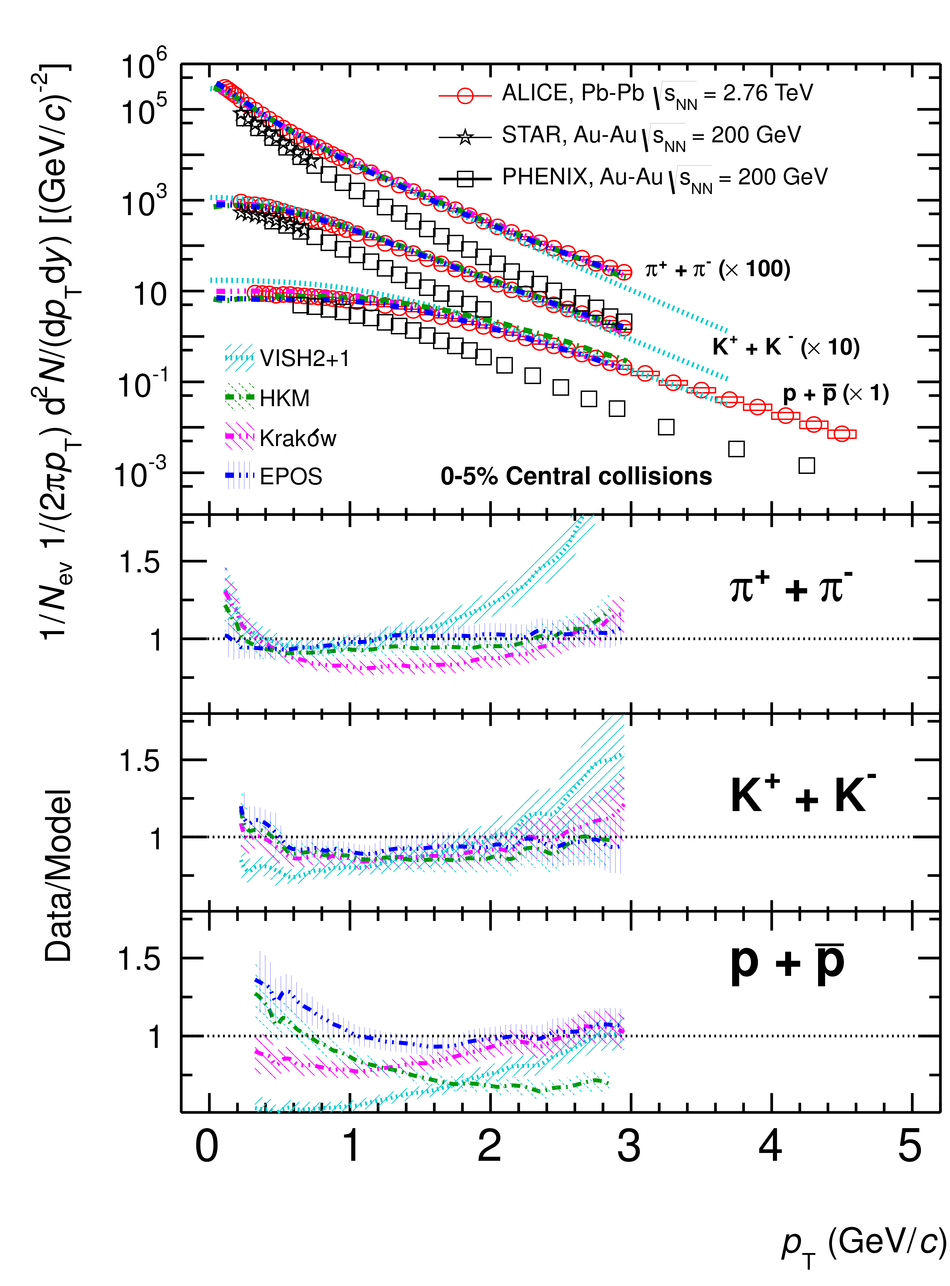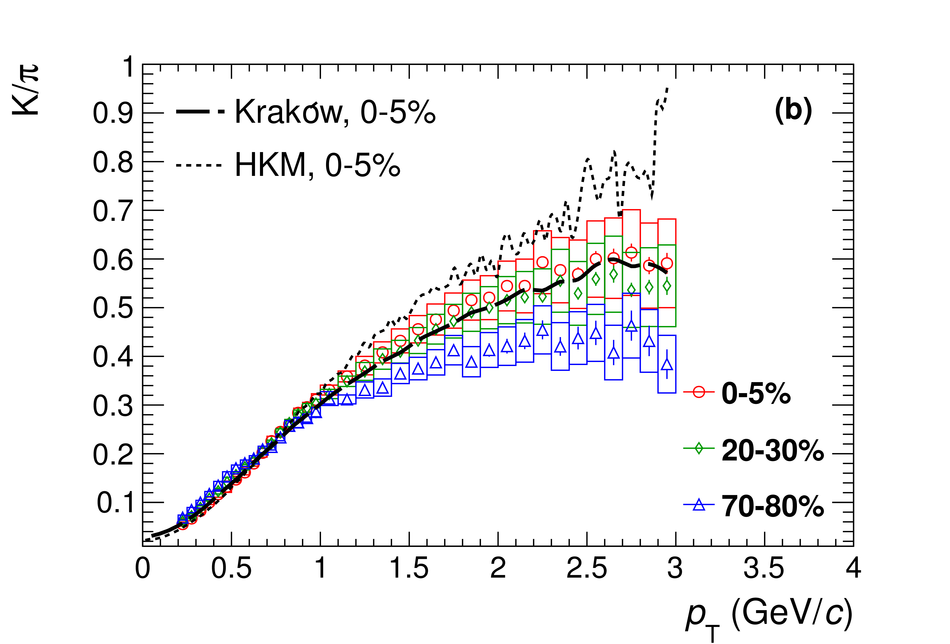In this paper measurements are presented of $\rm \pi+$,$π^-$, K$^+$, K$^-$, p and $\overline{\rm p}$ production at mid-rapidity < 0.5, in Pb-Pb collisions at $\sqrt{s_{\rm NN}} = 2.76$ TeV as a function of centrality. The measurement covers the transverse momentum ($p_{\rm T}$) range from 100, 200, 300 MeV/$c$ up to 3, 3, 4.6 GeV/$c$, for $\rm\pi$, K, and p respectively. The measured $p_{\rm T}$ distributions and yields are compared to expectations based on hydrodynamic, thermal and recombination models. The spectral shapes of central collisions show a stronger radial flow than measured at lower energies, which can be described in hydrodynamic models. In peripheral collisions, the $p_{\rm T}$ distributions are not well reproduced by hydrodynamic models. Ratios of integrated particle yields are found to be nearly independent of centrality. The yield of protons normalized to pions is a factor ~1.5 lower than the expectation from thermal models.
Phys. Rev. C 88 (2013) 044910
HEP Data
e-Print: arXiv:1303.0737 | PDF | inSPIRE
CERN-PH-EP-2013-019

